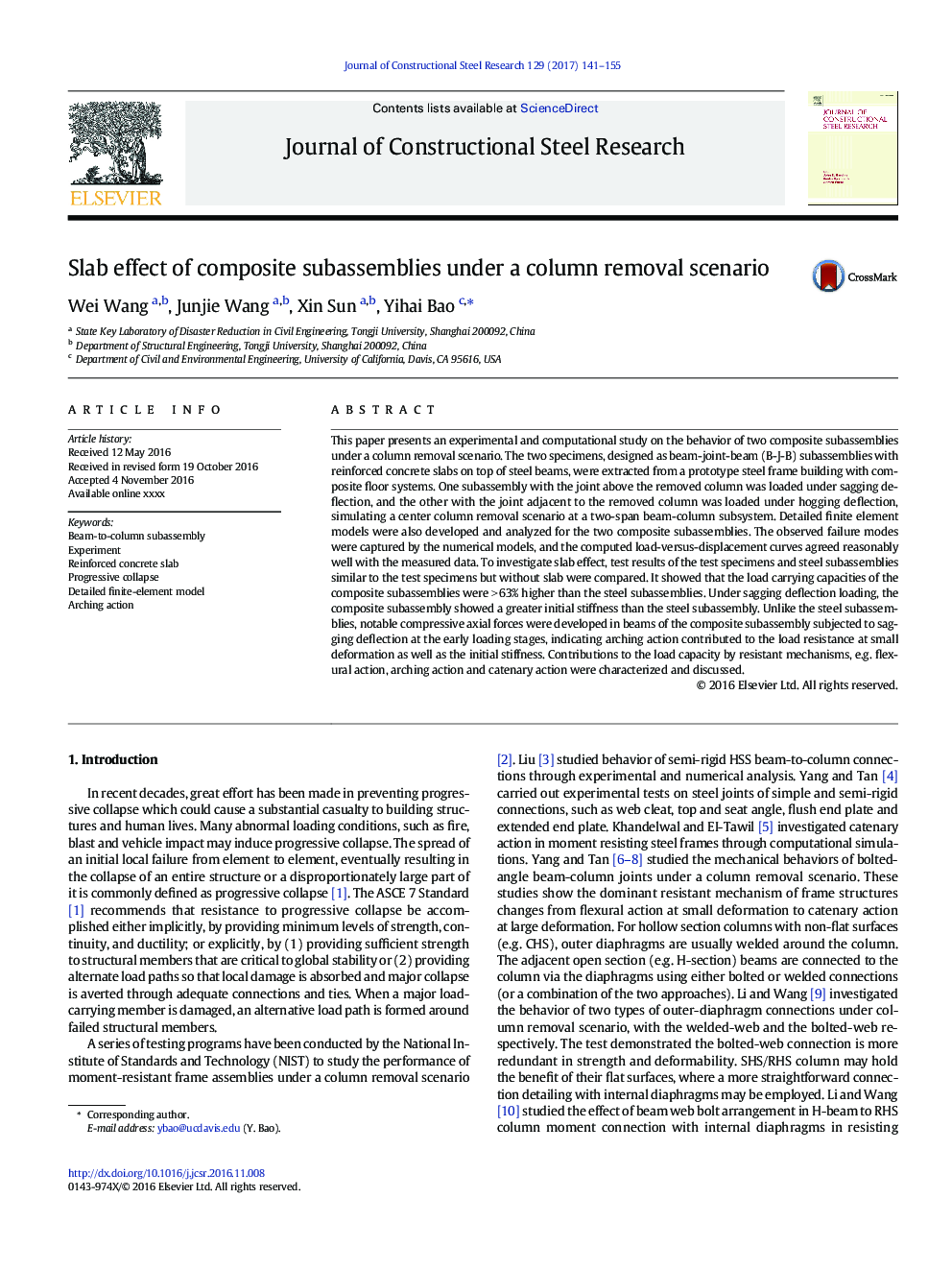| Article ID | Journal | Published Year | Pages | File Type |
|---|---|---|---|---|
| 4923555 | Journal of Constructional Steel Research | 2017 | 15 Pages |
Abstract
This paper presents an experimental and computational study on the behavior of two composite subassemblies under a column removal scenario. The two specimens, designed as beam-joint-beam (B-J-B) subassemblies with reinforced concrete slabs on top of steel beams, were extracted from a prototype steel frame building with composite floor systems. One subassembly with the joint above the removed column was loaded under sagging deflection, and the other with the joint adjacent to the removed column was loaded under hogging deflection, simulating a center column removal scenario at a two-span beam-column subsystem. Detailed finite element models were also developed and analyzed for the two composite subassemblies. The observed failure modes were captured by the numerical models, and the computed load-versus-displacement curves agreed reasonably well with the measured data. To investigate slab effect, test results of the test specimens and steel subassemblies similar to the test specimens but without slab were compared. It showed that the load carrying capacities of the composite subassemblies were >Â 63% higher than the steel subassemblies. Under sagging deflection loading, the composite subassembly showed a greater initial stiffness than the steel subassembly. Unlike the steel subassemblies, notable compressive axial forces were developed in beams of the composite subassembly subjected to sagging deflection at the early loading stages, indicating arching action contributed to the load resistance at small deformation as well as the initial stiffness. Contributions to the load capacity by resistant mechanisms, e.g. flexural action, arching action and catenary action were characterized and discussed.
Related Topics
Physical Sciences and Engineering
Engineering
Civil and Structural Engineering
Authors
Wei Wang, Junjie Wang, Xin Sun, Yihai Bao,
